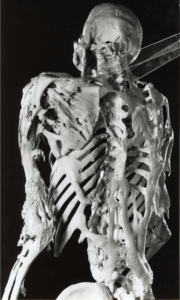The New York Times, September 24, 2015
Like many biologists, Ricardo C. Rodríguez de la Vega searches the world for new species. But while other scientists venture into the depths of the ocean or the heart of the jungle, Dr. Rodríguez de la Vega and his colleagues visit cheese shops.
“Every time we’re traveling internationally for a conference or something, we go specifically to the local cheese shop and say, ‘Give me the wildest blue cheese you have,’ ” said Dr. Rodríguez de la Vega, an evolutionary biologist at the French National Centre for Scientific Research in Paris.
Continue reading “That Stinky Cheese Is a Result of Evolutionary Overdrive”
